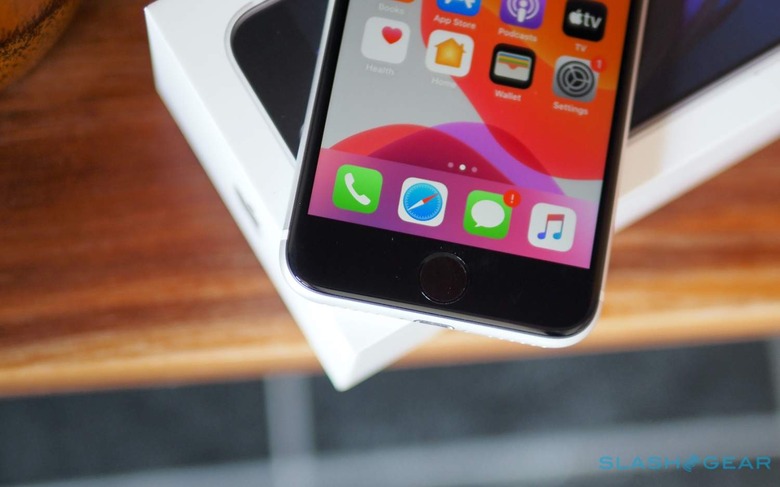Expect A New iPhone SE Screen And 5G Surprise Says Analyst
Apple's iPhone SE turned out to be arguably the surprise hit of 2020, and the bar is set high for the Cupertino firm's follow-up. Priced from $399 unlocked, despite having the same A13 chipset as the iPhone 11 Pro, the most affordable model in Apple's current line-up has also been the subject of new rumors as to how the company will handle upgrades while keeping the sticker low.
It's a tricky balance to strike. Apple benefits from the fact that it designs its own chips, allowing it to put recent silicon into the iPhone SE rather than buy lower-power processors from other sources, but there's still a limit to what you can afford to squeeze in if you want to still keep a starting price under the $400 mark.
For the iPhone SE (3rd generation), therefore, just how much of the current iPhone's flagship functionality and hardware might trickle down has been a big question. New chatter from DSCC analyst Ross Young – who focuses primarily on display tech – links up with other recent talk that there won't be a new iPhone SE in 2021. However he also indicates that there's something big to look forward to in the 2022 iPhone SE, and not just around screens.
Apple LCD iPhone leak, we now hear the next LCD iPhone SE will remain at 4.7" in 2022. Some rumors that it may have 5G with Sub-6 GHz as well. Also hearing about a 6.1" version in 2023 with punch hole rather than a notch.
— Ross Young (@DSCCRoss) April 1, 2021
It'll stick with an LCD panel, unlike the OLED screens that the current iPhone 12 family has adopted across the board, Young says. The 4.7-inch size will remain, too, which is likely to be a popular decision among those who want modern features but dislike the huge devices most manufacturers are pushing in their flagships.
According to Young, there are also rumors about 5G support in the new iPhone SE too. That would be an upgrade from the 4G LTE in the current 2nd Gen model, though it would apparently be the Sub-6 GHz flavor rather than the faster – and more expensive to implement – mmWave 5G.

The fact that the whole iPhone 12 series supported both Sub-6 GHz and mmWave 5G came as something of a surprise last year, given earlier rumors that only select models would support the faster type. Still, whether it's actually essential to have support for mmWave is questionable: not all networks support it in the US, and even those which do have limited availability. For the price tag, and most users, Sub-6 GHz would probably be perfectly sufficient.
Come the 2023 iPhone SE, Young adds, there's talk of a bigger screen again. That could be a 6.1-inch panel, using a punch hole selfie camera which would presumably assist with keeping overall device size relatively compact.
